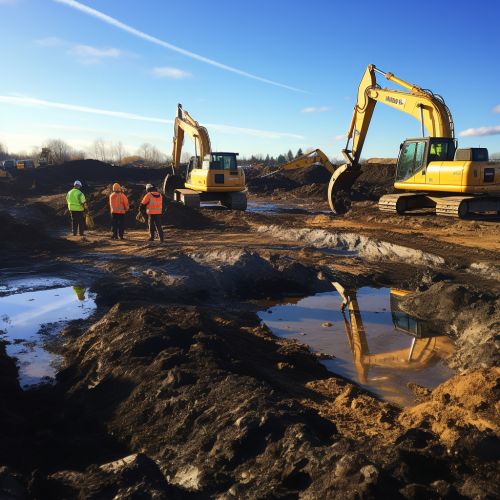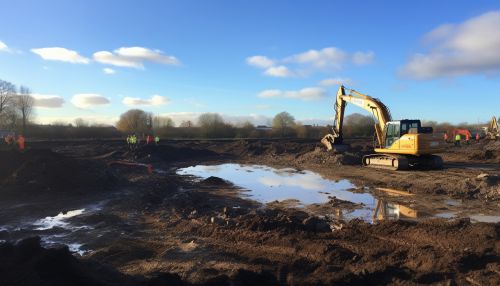Ex situ bioremediation
Introduction
Ex situ bioremediation is a process that involves the removal of polluted materials from their original site to a controlled environment where bioremediation can be performed. This method is commonly used to treat soils, sediments, and sludges that have been contaminated with organic pollutants. The process is facilitated by microorganisms that are capable of degrading these pollutants into less harmful substances.


Principles of Ex Situ Bioremediation
Ex situ bioremediation is based on the principle that certain microorganisms, including bacteria, fungi, and algae, have the ability to degrade organic pollutants. These microorganisms use the pollutants as a source of energy and carbon, breaking them down into less harmful substances such as carbon dioxide, water, and biomass. This process is known as biodegradation.
Techniques of Ex Situ Bioremediation
There are several techniques of ex situ bioremediation, including landfarming, biopiles, composting, and slurry phase bioremediation.
Landfarming
Landfarming is a simple and cost-effective technique that involves the spreading of contaminated soil in a thin layer over a large area. The soil is periodically tilled to promote aeration, which enhances the activity of aerobic microorganisms.
Biopiles
Biopiles are engineered heaps of contaminated soil that are aerated and periodically turned to promote biodegradation. Nutrients and moisture may be added to enhance microbial activity.
Composting
Composting involves the mixing of contaminated soil with organic amendments such as straw or manure. The mixture is placed in a composting bin or pile, where it is periodically turned to promote aeration and microbial activity.
Slurry Phase Bioremediation
In Slurry phase bioremediation, contaminated soil is mixed with water to form a slurry, which is then aerated and agitated to promote microbial activity.
Factors Affecting Ex Situ Bioremediation
Several factors can affect the efficiency of ex situ bioremediation, including the type and concentration of pollutants, the characteristics of the soil, the availability of nutrients, and the environmental conditions.
Type and Concentration of Pollutants
The type and concentration of pollutants can greatly affect the efficiency of bioremediation. Some pollutants are more readily degraded by microorganisms than others. In addition, high concentrations of pollutants can be toxic to microorganisms, inhibiting their activity.
Soil Characteristics
The physical and chemical characteristics of the soil, such as its texture, pH, and organic matter content, can also affect the efficiency of bioremediation. For example, soils with a high clay content may be less permeable to air and water, inhibiting the activity of aerobic microorganisms.
Nutrient Availability
Microorganisms require nutrients, such as nitrogen and phosphorus, to grow and reproduce. If these nutrients are not available in sufficient quantities, microbial activity may be limited.
Environmental Conditions
Environmental conditions, such as temperature, moisture, and pH, can also affect the activity of microorganisms. Optimal conditions for microbial activity vary depending on the species of microorganism.
Advantages and Disadvantages of Ex Situ Bioremediation
Ex situ bioremediation has several advantages and disadvantages.
Advantages
One of the main advantages of ex situ bioremediation is that it allows for greater control over the remediation process. Because the contaminated material is removed from its original site, it is easier to monitor and adjust the conditions to optimize microbial activity. In addition, ex situ bioremediation can be faster than in situ bioremediation, as it is not limited by the natural dispersion of pollutants in the environment.
Disadvantages
However, ex situ bioremediation also has several disadvantages. One of the main disadvantages is the cost and logistical challenges associated with the excavation and transport of contaminated material. In addition, ex situ bioremediation can cause secondary pollution if not properly managed. For example, dust and volatile organic compounds can be released into the air during the excavation and treatment of contaminated soil.
Conclusion
Ex situ bioremediation is a valuable tool for the remediation of contaminated soils, sediments, and sludges. By harnessing the natural ability of microorganisms to degrade organic pollutants, this method offers a sustainable and environmentally friendly approach to pollution control. However, careful management is required to optimize the efficiency of the process and to minimize the risk of secondary pollution.
